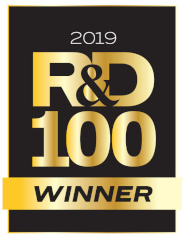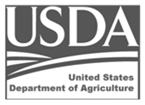There are ongoing economic pressures in production agriculture to increase crop yields. However, high grain yield production comes at a cost of applying significant quantities of various agricultural inputs, i.e. nutrients, pesticides and irrigation. In traditional farming systems, producers attempt to apply these inputs at a uniform rate across a given field. However, due to inherent spatial variability in fields, not all areas may require the same levels of input. Farmers continued to manage their fields uniformly because they lacked the technology to manage for variability. With the introduction of new precision farming technologies such as global positioning systems (GPS), geographic information systems (GIS), remote sensing, and variable rate application technology (VRT) farmers now have the ability to manage their fields site specifically.
As more producers become aware of precision farming technology they are asking how precision farming can improve their productivity and profitability. Variable rate fertilizer application is promoted by industry as a way to increase efficiency and improve production. Environmentally, it seems correct to vary the amount of fertilizer in relation to crop need, however this will not appeal to farmers unless they can gain economically from VRT.
Accurate prescription maps are essential for effective VRT N fertilizer application (Sawyer, 1994; Ferguson et al., 1996). Grid soil sampling has most frequently been used to develop these prescription maps and it has been reported that grid sampling at 20 to 30 m is generally needed when applying site specific management at a resolution of 20 by 20 m. The cost associated with grid sampling to the intensity required for accurate maps will be prohibitive in many cases.
The implementation of sustainable agricultural and environmental management requires a better understanding of the soil at increasingly finer scales for precision agriculture. Conventional soil sampling and laboratory analyses cannot provide this information because they are time consuming and expensive. Remote soil sensing can overcome these shortcomings because the techniques facilitate the collection of larger amounts of spatial data using cheaper, simpler, and less laborious techniques. Due to the technical and economic limitations associated with grid soil sampling described above, better tools are needed to fully realize the potential VRT technologies can provide. Persistence Data Mining’s program utilizes remote soil sensing to provide the powerful new tools needed to enhance Precision Farming adoption today.
Remote sensing is a technology that can be used to obtain various spatial layers of information about soil and crop conditions and allows detection and/or characterization of an object, series of objects, or landscape without physical contact.
During the last half of the century, remote sensing instrumentation developed from simple optical systems into complex digital sensors, allowing rapid and high quality scanning of the Earth’s surface. Computation algorithms have been developed to process remotely sensed data and to produce different types of images. Spatial, spectral, and temporal resolutions are the main characteristics of any remote sensing system.
Persistence Data Minings platform utilizes remote sensed hyperspectral imaging to map nitrogen, phosphorous, potassium, organic matter and pH with a consistently calibrated remote sensor. The technology initially creates a Normalized Difference Elemental Index (NDEI) map from the imagery. The NDEI relates the reflectance in the near-infrared (NIR) region and short-wave infrared (SWIR) to determine concentration of total nitrogen, phosphorous, potassium, organic matter and pH. A spatial yield potential map is then developed from the NDEI data. Remotely sensed imagery of soil, can offer an attractive alternative to the use of a standard soil sampling methods. Remotely sensed prescription maps are not affected by inaccuracies inherent in chemical wet lab processing. In field testing reduces soil respiration which changes the chemical composition in transport and processing. Correlation analysis shows a significant reduction in user error as related to the care of samples and sample taking methodology. The imagery data enables uniformity of sampling across soil types and textures in a post till process. The derived regression equations used to estimate soil nutrient concentrations will also have the potential to predict micronutrients for more precise fertilizer applications. From the remote soil sensing data Persistence Data Mining develops variable rate Nitrogen (N), Phosphorus (P) and Potassium (K) application maps. The user inputs the N, P, and K recommendation equations appropriate for their area.
Fertilizer savings from $15.00 to $40.00+ per acre can be achieved utilizing this system as well as 10 to 13 percent yield increases. The system is also environmentally effective in reducing fertilizer over application leading to runoff and leaching into ground water. By combining an effective suite of well researched and documented procedures, Persistence Data Mining is developing an industry leading fertilizer management system that can begin to fully utilize VRT’s vast potential.
The commoditization in the Ag retail sector is creating an increasingly flatter environment, the opportunity to replace the weak net margins commodities generate with creative value-added systems such as Persistence Data Mining with strong net margins is promising. A way that companies can be successful in a flat environment is by enabling their customers with effective technologies. Those who can create value through leadership, collaboration, and creativity will transform the industry, as well as strengthen their relationships with their existing clients. The last twenty five years in technology has just been the warm up act, now we are going to get into the main event, an era when technology will transform every aspect of business, every aspect of life, and every aspect of society (T.L. Friedman, 2015).


















